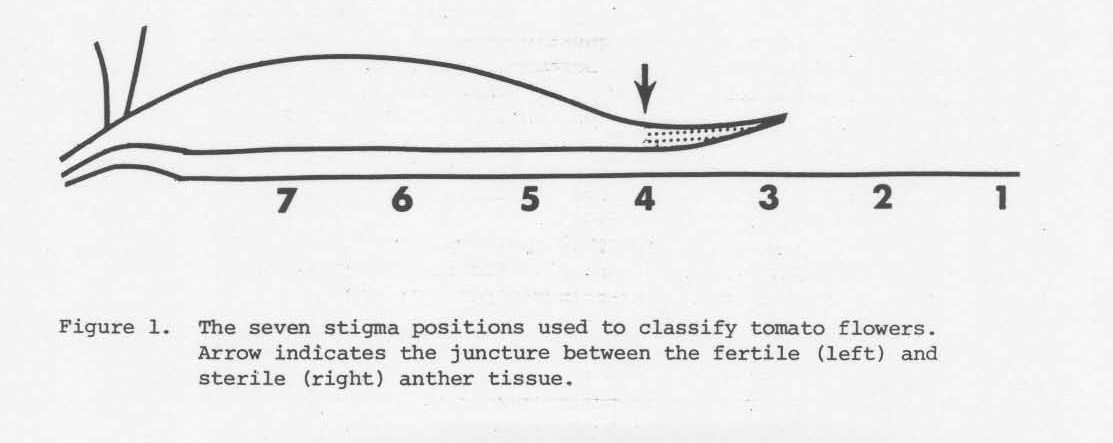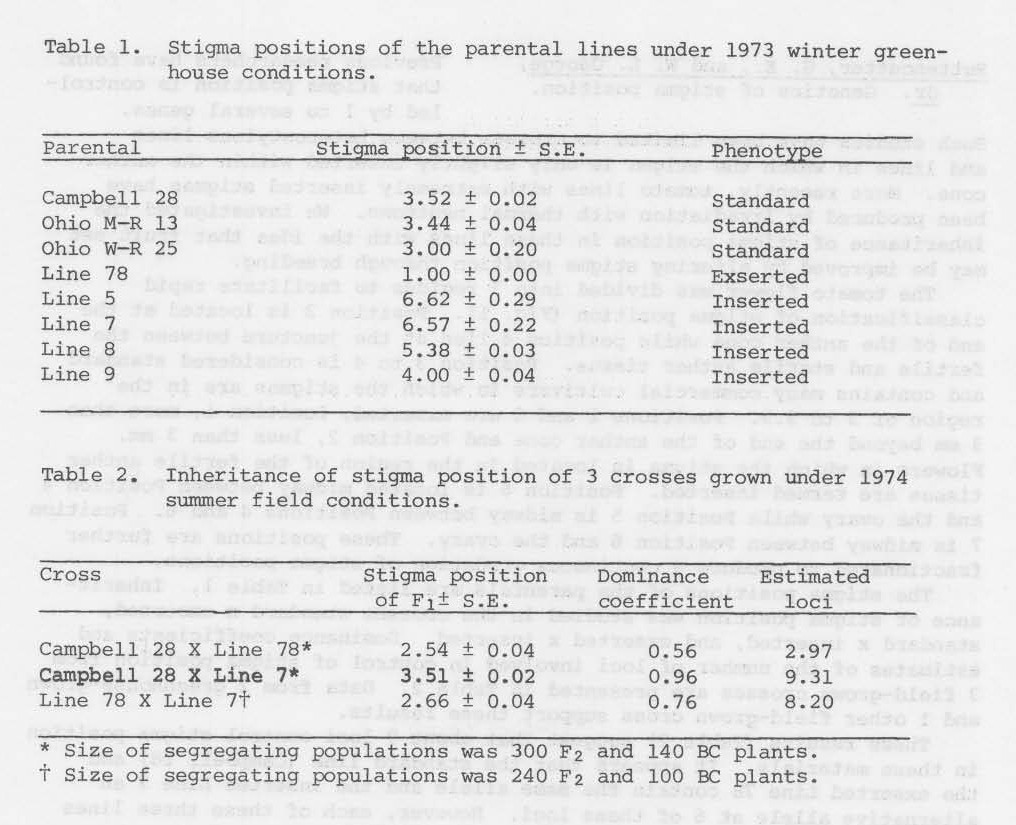
Ruttencutter, G. E., and W. L. George, Jr.
Genetics of stigma position.
Previous researchers have found that stigma position is controlled by 1 to several genes.
Such studies have been limited to crosses between heterostylous lines and lines in which the stigma is only slightly inserted within the anther cone. More recently, tomato lines with extremely inserted stigmas have been produced by irradiation with thermal neutrons. We investigated the inheritance of stigma position in these lines with the idea that fruit set may be improved by altering stigma position through breeding.
The tomato flower was divided into 7 regions to facilitate rapid classification of stigma position (Fig. 1). Position 3 is located at the end of the anther cone while position 4 lies at the juncture between the fertile and sterile anther tissue. Position 3 to 4 is considered standard and contains many commercial cultivars in which the stigmas are in the region of 3 to 3.5. Positions 1 and 2 are exserted, Position 1, more than 3 mm beyond the end of the anther cone and Position 2, less than 3 mm. Flowers in which the stigma is located in the region of the fertile anther tissue are termed inserted. Position 6 is located midway between Position 4 and the ovary while Position 5 is midway between Positions 4 and 6. Position 7 is midway between Position 6 and the ovary. These positions are further fractionated to produce a continuous gradation of stigma positions.
The stigma positions of the parentals are listed in Table 1. Inheritance of stigma position was studied in the crosses standard x exserted, standard x inserted, and exserted x inserted. Dominance coefficients and estimates of the number of loci involved in control of stigma position from 3 field-grown crosses are presented in Table 2. Data from 2 greenhouse-grown and 1 other field-grown cross support these results.
These results (Table 2) suggest that about 9 loci control stigma position in these materials. It appears that the standard line (Campbell 28) and the exserted Line 78 contain the same allele and the inserted Line 7 an alternative allele at 6 of these loci. However, each of these three lines contains a unique allele at each of the other 3 loci.
Seed supplies of the inserted parentals are currently limited but should be available by fall 1975 from W. L. George, Jr.

